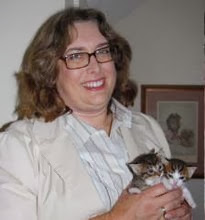I was interested to see the following AP article in the StarTribune newspaper for Minneapolis/St. Paul discussing an earlier push for more humane treatment of animals on their way to slaughter. I was even more interested to learn that one of the champions of the movement was Hubert H. Humphrey from Minnesota:
Fifty years ago, the hog slaughter film by Arthur P. Redman galvanized animal welfare advocates to pursue legislation. The film was shown at a congressional hearing in 1957 and Congress passed the landmark humane slaughter law the following year.
Speaking during debate on the day of the bill's passage, then-Sen. Hubert Humphrey, a Minnesota Democrat and future vice president, said: "We are morally compelled, here in this hour, to try to imagine — to try to feel in our own nerves — the totality of the suffering of 100 million tortured animals. The issue before us today is pain, agony and cruelty — and what a moral man must do about it in view of his own conscience."
Humphrey, perhaps best known for his championing of civil rights, also pushed humane slaughter legislation for years, first introducing a bill in 1955. Initially, he wanted to make humane slaughter mandatory, but wound up settling for a compromise that made it a condition of doing business with the federal government. In 1978, the year Humphrey died, Sen. Bob Dole, R-Kan., won passage of legislation making compliance mandatory, fulfilling Humphrey's original vision.
Read the whole article at: http://www.startribune.com/local/16028557.htmlMy father was a vegetarian. He never made a big deal about it and always said that meat made him sick as a child. His mother/my grandmother could confirm that one day he refused to eat the meat included with his dinner and rather than do so went to bed without dinner and that was that.
It is only quite recently that I have questioned the story about getting sick. He didn't eat beef, pork, chicken or fish. He could certainly have gotten sick after eating some kind of meat and I could understand (maybe) giving that up, but to give up all forms of meat, abruptly and permanently, as a child, is surprising.
He was no doubt subject to various forms of ridicule throughout his life. There weren't a lot of vegetarians in the 50s, 60s, 70s, etc. I suspect now that he may have had an experience that caused him to connect the animals that are the source of meat with the food on his plate. He was always very tenderhearted about animals and we regularly took in cast-off pets when I was growing up.
Whatever his reasons for giving up meat, they were personal and he did not ever suggest that others follow his lead, but I did grow up with a role model who was basically a meat and potatoes kind of guy without the meat. There wasn't a lot of variety in his food: potatoes, vegetables, soup, peanut-butter sandwiches, grilled cheese sandwiches, salads, fruit and dessert!
Anyway, I've never been a big meat eater and I'm going to try to drop beef first, then pork. We'll see how it goes. It's tough because I rarely cook, that may have to change.
Think occasionally of the suffering of which you spare yourself the sight.
Albert Schweitzer


 People need to make a real commitment when they adopt a pet, for the lifetime of that pet. It shouldn't be so hard to keep a pet and infant separate if that is your choice, but it would be better to deal with the two together -- better for the animal, of course, but also better for the child to learn about animals from a young age.
People need to make a real commitment when they adopt a pet, for the lifetime of that pet. It shouldn't be so hard to keep a pet and infant separate if that is your choice, but it would be better to deal with the two together -- better for the animal, of course, but also better for the child to learn about animals from a young age.





